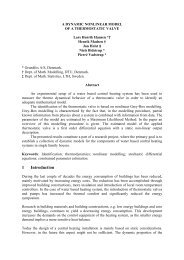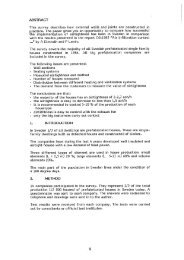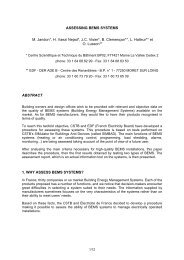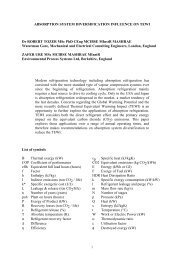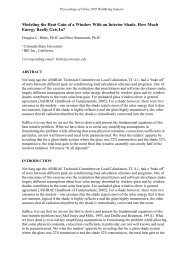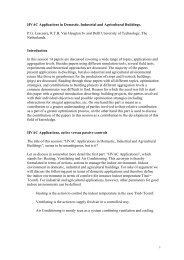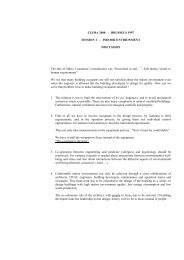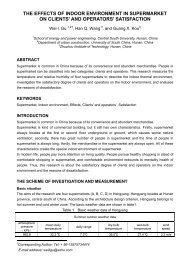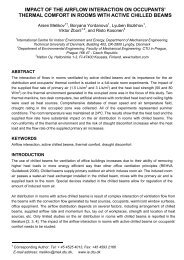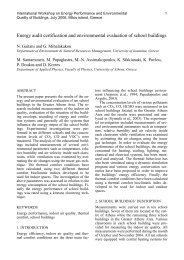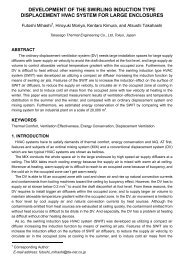PDF Viewing archiving 300 dpi - inive
PDF Viewing archiving 300 dpi - inive
PDF Viewing archiving 300 dpi - inive
Create successful ePaper yourself
Turn your PDF publications into a flip-book with our unique Google optimized e-Paper software.
SYNOPSIS<br />
Each occupant in a room should be able to control his<br />
own indoor environment. Individual control can be achieved<br />
in many ways: from simple window-opening to<br />
automatically arranged personal mini-environment.<br />
Individual control is not utilized effectively today.<br />
This is partly caused by lack of proper information,<br />
and partly by the fact that builders pay more attention<br />
to construction than to use and operation.<br />
Even technically complicated systems can be easy to<br />
operate -what is needed is sufficient, but not too<br />
difficult user information.<br />
In this paper, practical examples of user-friendly<br />
ventilation in residential and office buildings will be<br />
analyzed. Information problems, technical limitations<br />
and consequences of various individual control strategies<br />
will also be discussed.<br />
INTRODUCTION<br />
The need of ventilation is primarily caused by people<br />
and their activities, secondarily by other sources of<br />
heat and pollutants. People behave in different ways,<br />
and their activities vary highly individually in space<br />
and time.<br />
Ventilation should be designed and operated so that a<br />
proper indoor air quality is achieved whenever needed.<br />
Different people may also have different objectives for<br />
indoor air quality, thermal comfort etc. (1). So, the<br />
need of ventilation depends on occupancy. Ventilation<br />
can, in principle, be designed to be operated on full<br />
capacity all the time, but this would waste energy.<br />
Continuous minimized ventilation cannot, on the other<br />
hand, guarantee good indoor air. Ventilation should,<br />
therefore, be controllable in space and time - manually,<br />
automatically, or in a suitable combination.<br />
2 PHYSIOLOGICAL, PSYCHOLOGICAL AND TECHNICAL BACKGROUND<br />
2.1 Attitudes against mechanical ventilation - why?<br />
Many complaints are today made against mechanical ventilation.<br />
The words "SICK BUILDING" are presented too<br />
often in connection with a modern office or other work<br />
environment and mechanical ventilation or air-conditioning.<br />
In many cases, further complaints can be avoided by readjustment,<br />
minor renewal, and systematic operation and<br />
maintenance. But, complaints may occur (or remain) even<br />
if there, from the technical point of view, should be



